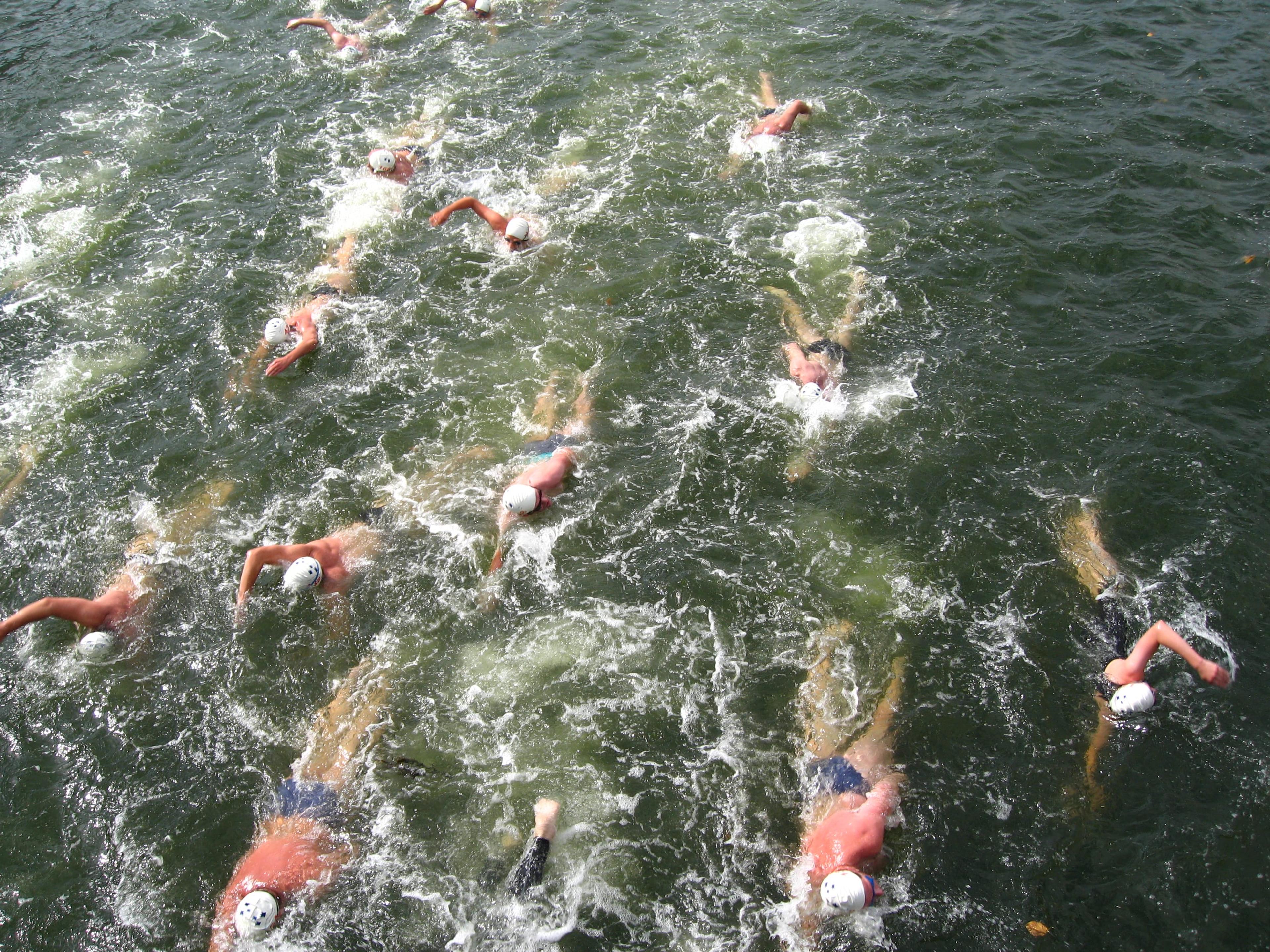Long Distance Swimming: The Keys to Success

Lucy Ciaramitaro
| 4 min read

“There’s no reason we shouldn’t be able to swim as far as we can walk.”
Ryan Rayner, IT Manager at Blue Cross Blue Shield of Michigan and Ironman 70.3 finisher, shared his insight on long-distance swimming at a Lunch & Learn with his fellow Blue Cross Blue Shield of Michigan employees. After listening to his presentation, it’s clear just how profound this sport is and how dedicated these athletes are.
Rayner’s journey with swimming began with short-distance sprinting, which most of us can understand the concept of: finish the race as quickly as possible. But what about when it comes to long-distance swimming?
Completing the Ironman 70.3 accredits Rayner’s understanding of the difference between the two. This triathlon lasts a duration of six hours and includes a 1.2-mile swim, a 56-mile bike and a 13.1-mile run. Feel tired just thinking about it? Me too.
Rayner explained four of the foundational techniques he feels those pursuing their passion for long-distance swimming should keep in mind; often referencing the style of experienced long-distance swimmer Terry Laughlin.

Principle #1: Practice repetitive calmness
“Commit to muscle memory and breathing patterns,” said Rayner. “Think about your strokes and your mental state because when the race starts, you can go with what you know.”
It’s easy to become overwhelmed in the intensity of the swimming portion of a triathlon, so by remaining calm you can keep yourself from panicking or in a worst case scenario, drowning.
“If your life depends on you making it to shore, you won’t,” he continues, “Your mind becomes tense and you forget your training, so you tire faster and lose your mentality.”
Principle #2: Body shaping vs. in shape body
“It’s not all about being in fantastic shape…you also have to have the proper body mechanics,” said Rayner. “How you shape your body in the water is more important than being in shape…swimming is technique.”
By practicing the accurate body movements in the water, you’re likely to lower your drag, and that is where you will see the most return in your performance.
Principle #3: Conservation of energy
“We need to be energy-miners,” said Rayner. “You want your heart rate underneath a threshold, then you hold that heart rate for the entire swim.”
This is where long distance swimming differs greatly from short-distance sprinting. Rather than dwelling on a faster stroke and breathing faster, you must slow your entire movement.
“Almost no forward motion comes from flutter kicking—it’s all in your arms,” he added.
Principle #4: Body mechanics coordinate right and left halves
Believe it or not, our bodies tend to move in a similar fashion when we swim as they do when we walk. You’ll notice during both that when the left hand comes up, the right leg does something simultaneously.
Rayner elaborated on how the left and right side of your body often work together. By balancing the rotation of your body and practicing a longer stoke, you are able to gain better speed. Your biceps and back tire very easily, so body rotation is what pulls you through the water.
“You should feel lazy in the water,” said Rayner. “When I’m in the pool I’m not focused on how hard I can swim, but on mastering the best stroke that I can.”
If you’re in a triathlon setting Rayner suggests using the sun or moon as a guide. That way, the tendency to veer off is less than it would be if you were to only breathe on one side because of the symmetry.
Rayner closed his presentation with some words of encouragement to those questioning their ability to pursue long-distance swimming.
“You may be thinking I can’t do it or it’s too hard or I’m not in good enough shape or I’m over the age limit…well Diane Niaad, who swam from Cuba to Florida, was in her 60s,” he said. “She’s not built like a professional athlete…she looks like a regular 60-year-old. I’ve always kept that in mind.”
How many of you are long-distance swimmers? Share some of your tips with us in the comment section below.
Photo Credit via Flickr: A Healthier Michigan (feature), Salim Virji (inset)





